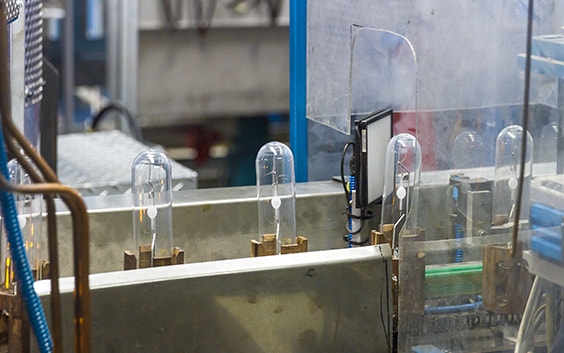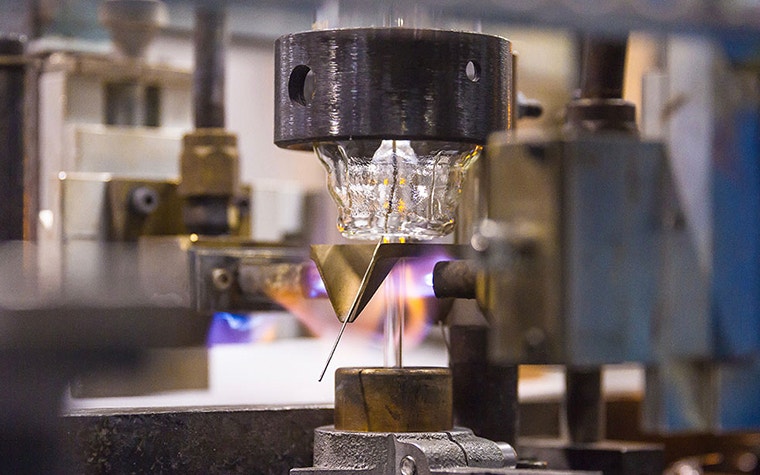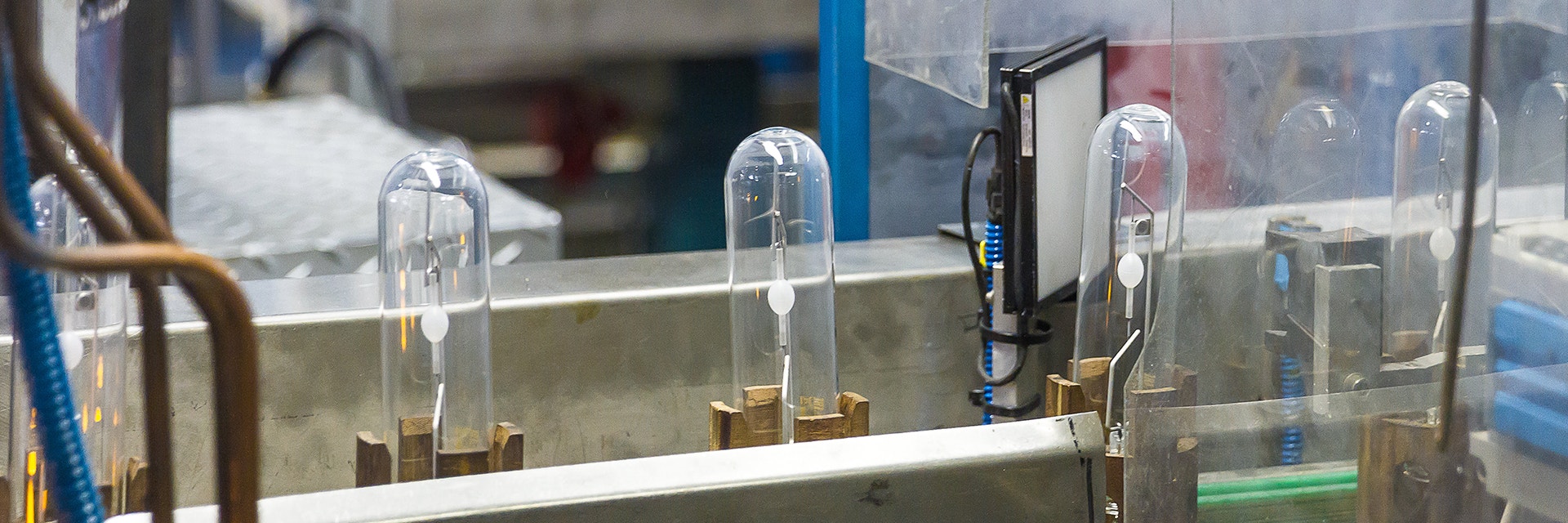CUSTOMER STORY
How 3D-Printed Components Transformed Efficiency and Productivity on Signify’s Lightbulb Assembly Line

In 2017, Signify (formerly known as Philips Lighting) came to Materialise with an interesting proposition. Could the benefits of 3D printing — such as reliability, efficiency, and rapid prototyping — be applied to improve certain components on their assembly line prone to persistent part failure? The answer was a resounding yes; AM has helped significantly reduce their operational costs.
The collaboration resulted in the reinvention of a lamp holder bracket and suction gripper that have functioned continuously for four years without breaking once, realizing cost savings of around €89,000 a year. “As we haven't had to replace any parts, 3D printing has also reduced maintenance times and the technicians can now concentrate on real technical problems,” explains Danny Van der Jonckheyd, Senior Mechanical Design Engineer at Signify. As a result, these innovations have boosted employee morale and sparked new ideas within the company about future applications for 3D printing.
Signify is a world leader in lighting solutions, manufacturing and developing conventional and LED light solutions for over 130 years. With such an illustrious history, the chances are you probably have one of their lightbulbs (or devices) in your home at this moment — as reliability, longevity, and innovation are normally associated with Signify’s consumer products.
However, lightbulbs are not easy to make, as the manufacturing team in Turnhout, Belgium, can attest. The usual stresses and strains along the assembly line (specifically repeated furnace heating and rapid cooling), resulted in frequent repairs, the need for extra storage to house spares, and (re)assembly of the new parts on the production line. This is where Danny and his team consulted us to find a solution using 3D printing: “We asked Materialise for help because they have the necessary know-how for this technique.”


A bolt of inspiration: 3D printing illuminates the manufacturing floor
Materialise went to the site to gain an in-depth understanding of Signify’s specific production line requirements, along with holding a collaborative Q&A session to choose the right AM materials and technique to meet the team’s expectations.
“The collaboration with Materialise was very smooth and transparent. For us, it was of great value. It helped us spread 3D printing through the factory. If you’d like to start working with 3D printing, you should definitely contact Materialise. They can do your design or redesign. You can learn a lot.”
— Danny Van der Jonckheyd, Senior Mechanical Design Engineer at Signify
This is where our design and engineering capabilities, combined with our 30 years of 3D printing knowledge really shone through: “Where could the option to use lighter materials have an impact? Where could AM be utilized for structural designs impossible or too expensive to realize using traditional manufacturing techniques, so that we can improve performance or reduce wastage on the factory floor? These were the types of questions we discussed with the Signify team,” recalls Mathieu Cornelis, Innovation Manager at Materialise Mindware.
Danny Van der Jonckheyd, Senior Mechanical Design Engineer at Signify, explains the benefits of 3D printing to the business and why he believes Materialise’s advisory service made the difference.
Forging a new path: co-engineered 3D-printed parts light up the assembly line
Such levels of detail really impressed the team at Signify which led to Materialise co-engineering and metal printing a new and improved single structure bracket/holder. The component is used to hold lamps in place and keep lead-in wires away from heat, as torches are applied to melt and seal off glass exhaust tubes.


Previously, repeated exposure to high temperatures on a continuous line (paired with structures featuring weld lines from a four-piece bracket assembly), meant sheering and breakage was a common occurrence, with one or two failing every week. Now, thanks to 3D printing and the removal of weld line pressure points completely — time-consuming part assembly is a thing of the past. “We’ve also reduced our outlay for replacement parts and, because we now have ‘digital spares’ that can be printed and delivered in just 10 days, we only have to store a limited number on location. AM has really delivered operational benefits to our factory floor,” Danny stresses.
Four more years! Looking at the past, being aware of the present, and evaluating the future
Since its implementation, the re-imagined bracket has not broken once. It’s a small change that has made a significant difference: “The parts that were put on the machine in 2017 are still working today. There haven’t been any defects and no repairs have had to be done so far. The first 3D-printed part was a great success,” Danny explains enthusiastically.


Inspired by the accomplishment and costs savings of the first part made Danny contemplate: how else could Signify use 3D printing to improve efficiency on the site? This idea motivated the team to (re)design a new burner, combining several pieces into a single 3D-printed shape: “There are no halts in the assembly line; no cleaning has to be done. Parts aren’t breaking anymore,” Danny continues.
As for the future, with a string of successes and an engaged workforce, Signify is looking ahead to see what else on-site could benefit from AM and Materialise’s unique expertise.
“The collaboration with Materialise was very smooth and transparent. For us, it was of great value. It helped us spread 3D printing through the factory. Previously, we worked in a traditional manner. And we stuck to it, making only squares. Materialise helped us let go of these shapes and create an ideal shape.
“AM has benefited us immensely, improving the efficiency on the assembly line while reducing our costs. If you’d like to start working with 3D printing, you should definitely contact Materialise. They can do your design or redesign. You can learn a lot.”
Share on:
You might also like
Never miss a story like this. Get curated content delivered straight to your inbox.
